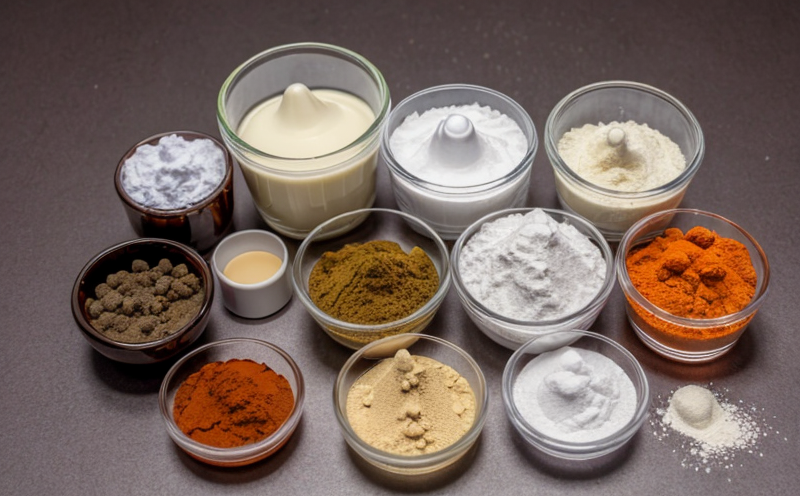Leachables and Extractables Testing
The testing of leachables and extractables is a critical process in pharmaceutical development. This procedure ensures that any substance released from packaging materials, excipients, or other formulation ingredients during the production or use phase does not pose a risk to product quality or patient safety.
Leachables are substances that may dissolve into a drug product or its container system over time. Extractables, on the other hand, refer to compounds that can be transferred from packaging materials to the drug substance under specific conditions during processing and storage. Together, these two terms encompass all potential contaminants introduced through contact with the drug.
The testing of leachables and extractables is governed by several international standards including ISO 10993-18 for medical devices and pharmaceuticals, ASTM E2347 for plastic containers, and IEC 60601-2-13 for electrical/electronic medical equipment. Compliance with these standards ensures that the testing process adheres to recognized best practices.
The scope of leachables and extractables testing includes a wide range of materials such as packaging components (plastics, metals), excipients used in formulations (microcrystalline cellulose, lactose monohydrate), and even the manufacturing equipment itself. The goal is to identify any potential contaminants that could affect drug stability or integrity.
Specimen preparation for this testing involves selecting appropriate samples based on their expected contribution to leachables and extractables. This might include cutting coupons from packaging materials, dissolving excipients in solvents like methanol, or simulating the manufacturing process with equipment. Once prepared, these samples undergo rigorous analysis using advanced analytical techniques.
Instrumentation used for this purpose can vary widely depending on the type of material being tested and its potential contribution to leachables/extractables. Commonly employed methods include gas chromatography (GC), liquid chromatography (LC), mass spectrometry (MS), inductively coupled plasma optical emission spectroscopy (ICP-OES), and atomic absorption spectroscopy (AAS). Each method has unique advantages suited for different types of substances.
After analysis, results are interpreted according to predefined acceptance criteria set forth by regulatory bodies like the FDA or EMA. These criteria establish thresholds above which certain levels of leachables or extractables would be considered problematic. Compliance with these standards ensures that only safe products reach the market.
In summary, leachables and extractables testing plays a crucial role in ensuring drug safety and efficacy by identifying any potential contaminants introduced through contact between packaging materials/ingredients and the active pharmaceutical ingredient (API). By following established protocols outlined in international guidelines such as ISO 10993-18 or ASTM E2347, laboratories can provide reliable data that supports informed decision-making throughout the drug development lifecycle.
Quality and Reliability Assurance
- Compliance with International Standards: Our laboratory adheres to rigorous international standards such as ISO 10993-18, ASTM E2347, and IEC 60601-2-13. These guidelines ensure our testing methods are robust and reproducible.
- Rigorous Specimen Preparation: We employ precise techniques for preparing specimens, including cutting coupons from packaging materials or dissolving excipients in solvents like methanol.
- Diverse Instrumentation: Our state-of-the-art equipment includes gas chromatography (GC), liquid chromatography (LC), mass spectrometry (MS), ICP-OES, and AAS, ensuring accurate detection of even trace amounts of leachables and extractables.
- Stringent Acceptance Criteria: Results are interpreted against predefined thresholds set by regulatory bodies like the FDA or EMA to ensure only safe products pass our stringent quality checks.
The reliability of these tests is further enhanced through regular calibration of instruments, participation in proficiency testing programs, and continuous training for staff. This commitment to excellence ensures that every result produced at our laboratory meets the highest standards of accuracy and precision.
Customer Impact and Satisfaction
Our customers benefit significantly from our leachables and extractables testing services. By providing accurate, reliable data on potential contaminants in packaging materials and formulation ingredients, we help ensure drug safety and efficacy throughout the entire product lifecycle.
For quality managers responsible for ensuring compliance with regulatory requirements, our detailed reports offer peace of mind knowing that all necessary tests have been conducted correctly. Compliance officers can use this information to make informed decisions regarding supplier selection and process optimization.
R&D engineers gain valuable insights into material interactions during development phases, allowing them to identify potential issues early on and implement corrective measures if needed. For procurement teams, our testing helps verify that purchased materials meet specified quality standards before integration into larger projects.
Ultimately, by leveraging our expertise in leachables and extractables testing, customers can reduce risks associated with non-compliant products entering the market. This not only protects public health but also enhances brand reputation among consumers who trust pharmaceutical companies to produce safe medications.
Competitive Advantage and Market Impact
By offering comprehensive leachables and extractables testing services, our laboratory provides a significant competitive advantage for pharmaceutical manufacturers. In an increasingly regulated industry where safety and efficacy are paramount, having access to reliable data on potential contaminants can be the difference between success and failure.
Clients who partner with us gain strategic insights into material interactions that could impact drug performance or stability. This knowledge empowers them to make well-informed decisions about raw materials, packaging solutions, and manufacturing processes. As a result, they are better positioned to innovate and bring new products to market faster while maintaining high standards of quality.
In addition to supporting internal R&D efforts, our testing services also contribute directly to the overall reputation of pharma companies by ensuring that only safe, compliant products reach patients worldwide. This helps build trust with healthcare professionals and consumers alike, ultimately driving greater loyalty and market share growth.





